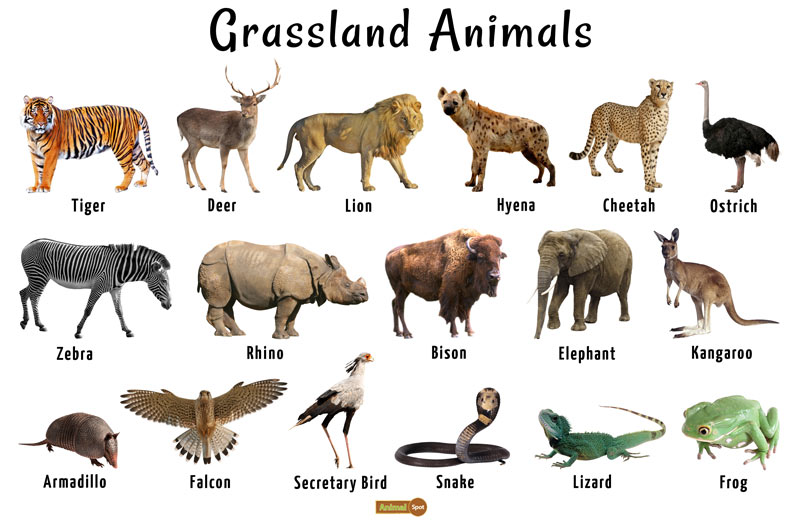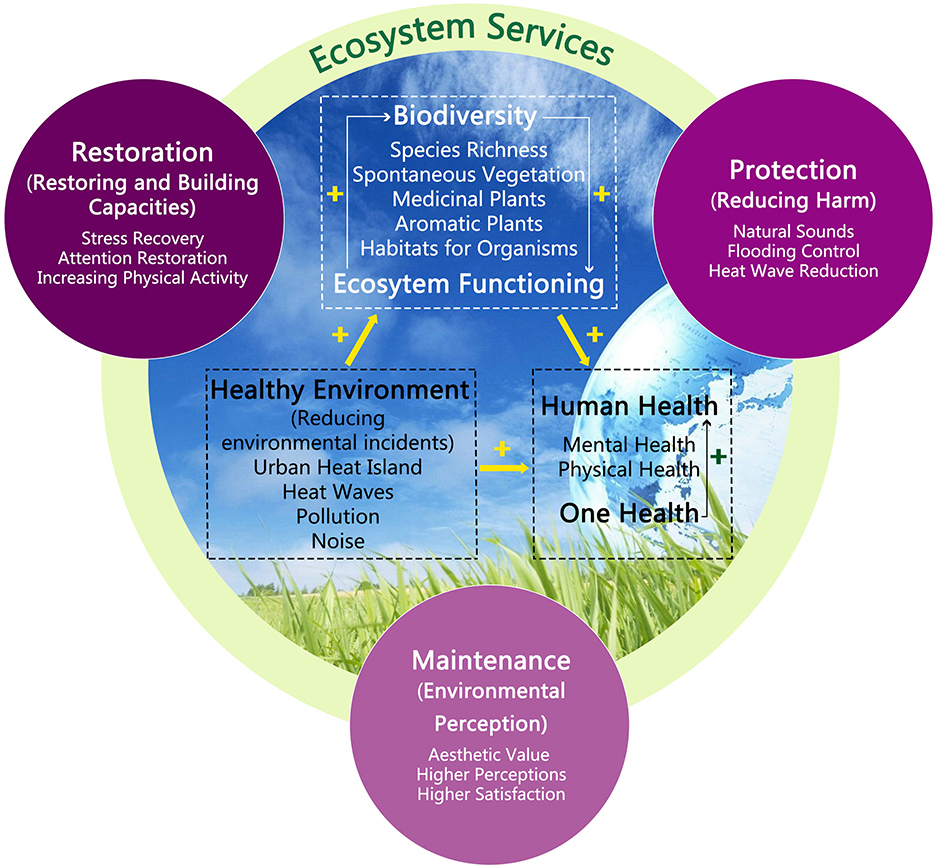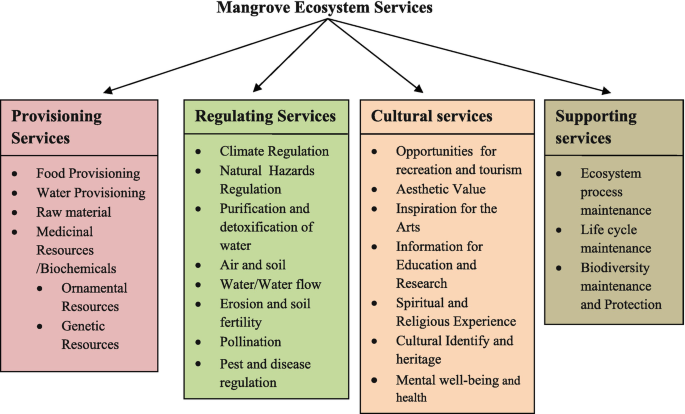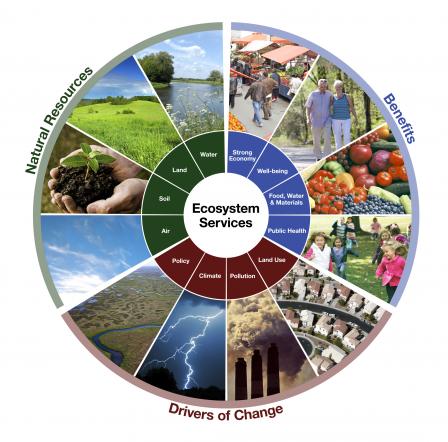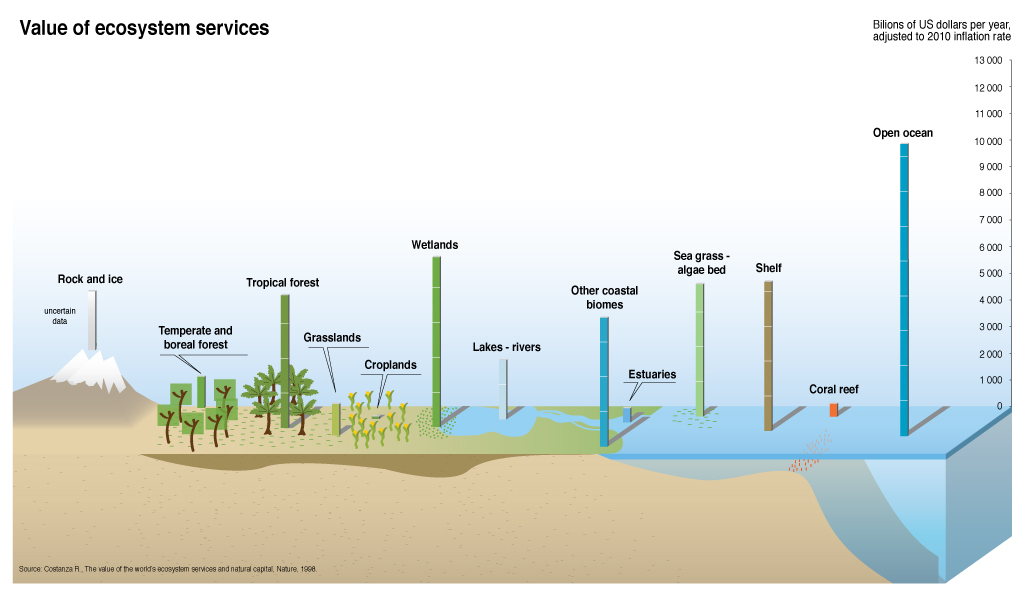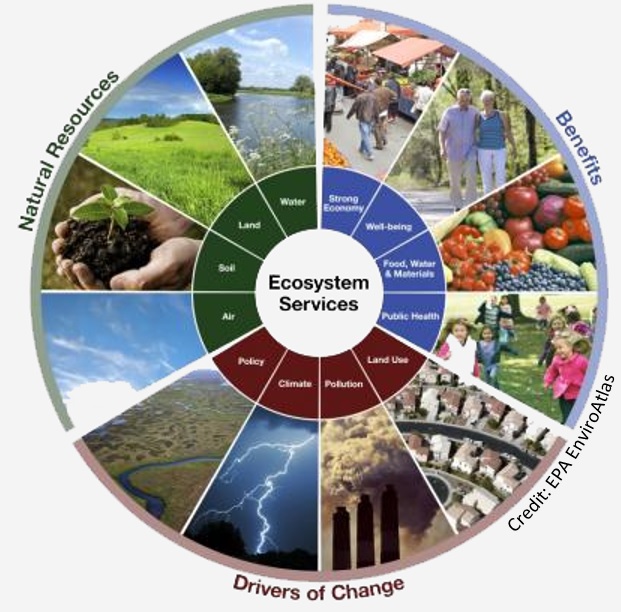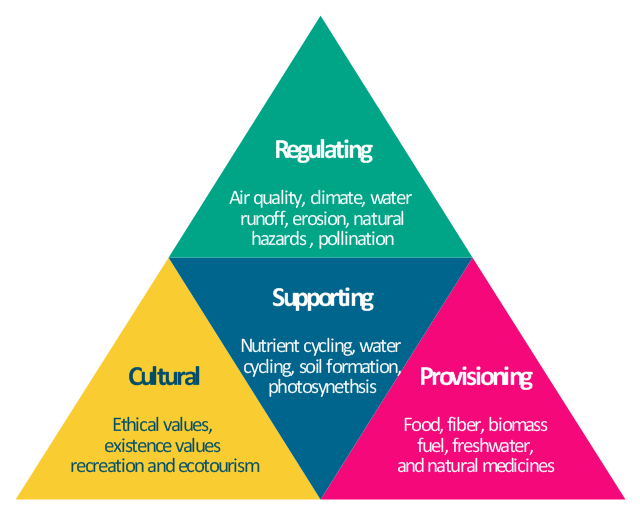Topic niche in the ecosystem: Explore the concept of "Niche in the Ecosystem," a fascinating journey into the roles species play in their habitats, shaping biodiversity and ecosystem dynamics.
Table of Content
- Can you provide further explanations on the concept of a niche in the ecosystem and how it relates to the interactions of different species?
- Components of an Ecological Niche
- Types of Niches
- Importance of Ecological Niches
- Conclusion
- YOUTUBE: What Is A Niche - Ecology Environment Biology FuseSchool
- Definition of an Ecological Niche
- Components and Factors Defining a Niche
- Types of Niches: Fundamental vs. Realized
- The Role of Niches in Ecosystem Dynamics
- Niche Partitioning and Species Coexistence
- Examples of Niche Adaptation and Specialization
- Impact of Environmental Changes on Niches
- Niches and Biodiversity Conservation
- Research and Methodologies in Niche Studies
- Future Directions in Niche Ecology
Can you provide further explanations on the concept of a niche in the ecosystem and how it relates to the interactions of different species?
Ecological niche refers to the role and position of a species within its ecosystem, including how it meets its needs for food, shelter, reproduction, and survival. It is a term used to describe the specific way in which an organism fits into its environment and interacts with both the living and non-living components of that environment.
When we talk about the concept of a niche in the ecosystem, we are essentially looking at the specialized role that a species plays in its habitat. This includes its unique set of adaptations, behaviors, and habitat requirements that allow it to thrive in that particular environment.
The interactions of different species within an ecosystem are closely tied to their respective niches. Each species has its own niche, which may overlap with the niches of other species to varying degrees. These interactions can be competitive, where species compete for limited resources such as food or space. They can also be mutualistic, where species engage in mutually beneficial relationships, or predatory, where one species feeds on another.
- Species with overlapping niches may compete with each other for resources, leading to evolutionary adaptations that allow them to coexist or partition resources in some way.
- Some species may have unique niches that minimize competition, allowing them to occupy a specialized ecological role within the ecosystem.
- Interactions within niches can be complex and dynamic, influenced by factors such as environmental changes, population dynamics, and human impact on the ecosystem.
In summary, the concept of a niche in the ecosystem is crucial for understanding how different species coexist and interact within a given habitat. By examining the niches of various species, we can gain insights into the intricate web of relationships that shape the dynamics of ecological communities.
READ MORE:
Components of an Ecological Niche
- Physical Conditions: Temperature, humidity, and other abiotic factors that a species needs to survive.
- Biological Interactions: Predation, competition, and symbiosis with other organisms.
- Resource Use: The specific resources a species requires, such as food, nesting sites, and water.

Types of Niches
- Fundamental Niche: The potential mode of existence of a species, given its adaptations.
- Realized Niche: The actual conditions under which the species exists, considering competition and other biotic factors.
Importance of Ecological Niches
Understanding ecological niches is crucial for conservation efforts, as it helps in identifying the needs of different species and the roles they play in their ecosystems. Niches ensure species diversity by minimizing competition, allowing for coexistence through resource partitioning and specialization.
Examples of Niche Specialization
| Species | Niche Example |
| Bees | Pollination of plants |
| Woodpeckers | Feeding on insects in tree bark |
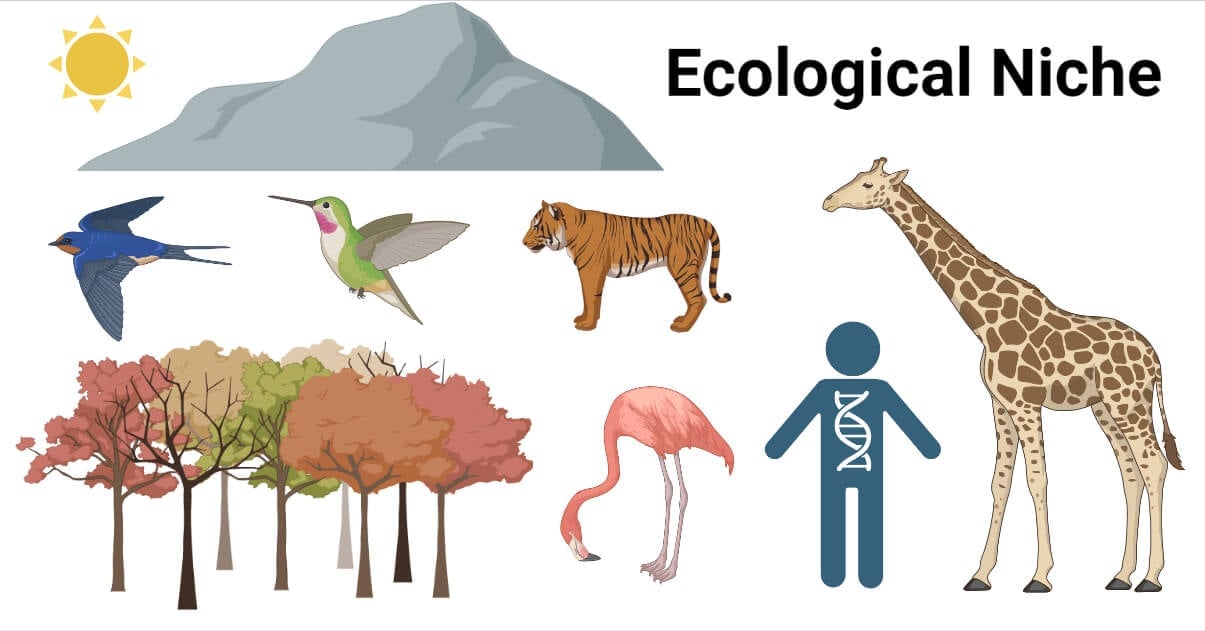
Conclusion
An ecological niche is more than just a habitat; it is a comprehensive role that a species plays in its environment. This concept is fundamental to ecology, helping explain how species interact within ecosystems and how biodiversity is maintained.
What Is A Niche - Ecology Environment Biology FuseSchool
Explore the fascinating world of niche marketing in this engaging video. Discover how narrowing your focus can lead to increased success and profitability in your business. Don\'t miss out on this valuable insight!
Ecological Niche
Dive into the beauty and importance of ecology in this captivating video. Learn how we can protect and preserve our environment for future generations. Gain a new appreciation for the natural world around us.
Definition of an Ecological Niche
An ecological niche is the role or function an organism plays within its ecosystem. It encompasses the range of conditions necessary for the organism"s survival, including its behavior, diet, and interactions with other species. This concept is crucial for understanding biodiversity and the dynamics within ecosystems.
- Physical Environment: The abiotic factors like temperature, soil type, and water availability that affect a species" living conditions.
- Biological Interactions: Includes predation, competition, and mutualism that a species engages in with other organisms.
- Resource Utilization: How a species uses the available resources, such as food and shelter, within its environment.
Understanding an organism"s ecological niche helps in conserving biodiversity by highlighting the importance of each species in maintaining ecosystem balance. It also aids in identifying how changes in environmental conditions can impact various species and the overall health of ecosystems.

Components and Factors Defining a Niche
The ecological niche of a species is shaped by a combination of components and factors that define its specific role within an ecosystem. These elements determine how a species interacts with its environment and other organisms.
- Abiotic Factors: Non-living chemical and physical parts of the environment that affect living organisms and the functioning of ecosystems. Examples include sunlight, soil, water, and temperature.
- Biological Factors: The interactions with other living organisms, including competition, predation, and mutualism, which influence a species" survival and reproduction.
- Resource Availability: The presence of necessary resources such as food, water, and territory that a species needs to thrive.
- Behavioral Adaptations: The behaviors and strategies a species develops to survive and reproduce, such as migration patterns, feeding habits, and reproductive strategies.
These components are interrelated and collectively define the niche of a species, highlighting the complexity and interconnectedness of ecosystems. Understanding these factors is essential for ecological research, conservation efforts, and the management of natural resources.
Types of Niches: Fundamental vs. Realized
In ecology, niches are categorized into two main types: fundamental and realized. This distinction helps in understanding how species interact with their environment and other organisms.
- Fundamental Niche: Describes the full range of environmental conditions under which a species can survive and reproduce without the influence of competitors or predators. It represents the potential lifestyle of the species.
- Realized Niche: Represents the actual conditions a species lives under, taking into account the presence of competitors, predators, and other biotic factors. It is often narrower than the fundamental niche due to these interactions.
The concept of fundamental and realized niches highlights the dynamic nature of ecosystems, where species adapt to their surroundings and the presence of other organisms. This distinction is crucial for understanding species distribution, competition, and the impact of environmental changes on ecosystems.

The Role of Niches in Ecosystem Dynamics
The ecological niche is a fundamental concept in understanding how species interact with their environment and with each other within ecosystems. A niche encompasses not just the habitat that a species occupies, but also its role in the ecosystem, including its interactions with other species and its response to various environmental factors.
Three perspectives have shaped our understanding of ecological niches:
- Grinnellian niche: Focuses on the physical environment a species requires to survive and its behavioral adaptations to that environment.
- Eltonian niche: Emphasizes a species" role in the ecosystem, including its dietary habits and its relationship with predators and competitors. This perspective highlights how a species can alter its environment and the behavior of other species.
- Hutchinsonian niche: Describes a niche as an "n-dimensional hypervolume" encompassing all the environmental conditions and resources that define the requirements for a species to maintain its population.
These perspectives illustrate that niches are not static but are influenced by dynamic interactions between species, as well as by changes in environmental conditions. Niches play a critical role in ecosystem dynamics by determining the distribution and abundance of species. They contribute to biodiversity by allowing species to coexist through niche differentiation and resource partitioning. For example, species with overlapping niches can avoid competitive exclusion by utilizing resources in different ways or at different times, thus maintaining ecosystem balance.
Niche construction, where species actively modify their environments, further influences ecosystem dynamics. Such modifications can alter the niches of other species and lead to changes in species composition and interactions within ecosystems. Understanding the role of niches in ecosystem dynamics is crucial for conservation efforts, as it helps predict how changes in the environment or species interactions could impact biodiversity.
Niche Partitioning and Species Coexistence
Niche partitioning and species coexistence are key concepts in ecology that describe how different species share and utilize resources within the same ecosystem, allowing them to coexist without outcompeting each other. This process is crucial for maintaining biodiversity and ecosystem stability. By partitioning niches, species minimize competition for resources, which can include food, space, and other environmental factors.
- Resource Partitioning: Different species use different sets of resources or use the same resources in different ways. This can occur through variations in diet, habitat selection, or temporal activity patterns. For example, birds that feed on the same tree may specialize in eating from different parts of the tree or at different times of the day.
- Habitat Segregation: Species may occupy different habitats within the same ecosystem, reducing direct competition. Habitat differentiation is a form of niche partitioning where species exploit different environments or microhabitats.
- Temporal Partitioning: Species may use the same space or resources but at different times. Nocturnal and diurnal species exemplify this, with one being active at night and the other during the day, thus avoiding direct competition.
- Morphological Specialization: Evolution can lead to physical adaptations that allow species to access different resources in the same area. Beak shape variations in birds that feed on the same type of food but in different ways is a classic example of morphological specialization facilitating niche partitioning.
Niche partitioning enhances species coexistence by reducing competition and allowing for a more efficient use of resources. It is a dynamic process that can change as species evolve and as environmental conditions shift. Understanding niche partitioning is vital for conservation efforts, as it helps identify the ecological roles of species and the potential impact of habitat changes on ecosystem diversity.

Examples of Niche Adaptation and Specialization
Niche adaptation and specialization are evolutionary processes that enable species to fit into their ecological niches, optimizing their survival and reproduction by minimizing competition. These adaptations can be morphological, physiological, or behavioral, reflecting the diverse strategies species use to thrive in their environments. Here are some examples illustrating these concepts:
- Beak Variations in Darwin"s Finches: On the Galápagos Islands, Darwin"s finches have evolved distinct beak shapes and sizes that allow them to consume different types of food, such as seeds, insects, and flowers. This specialization helps reduce competition for food resources among the finches.
- Camouflage in Insects: Many insects have developed body shapes and colors that mimic their surroundings or other objects, as seen in stick insects and leaf insects. This camouflage helps them avoid predators and blend into their specific habitats.
- Deep-Sea Creatures: Animals living in the deep sea, such as anglerfish and giant tube worms, have adapted to extreme conditions of darkness, high pressure, and low temperatures. Anglerfish use bioluminescent lures to attract prey, while giant tube worms rely on symbiotic bacteria for nutrition.
- Desert Plants (Xerophytes): Plants in arid environments, such as cacti and succulents, have adaptations like thick, waxy skins to reduce water loss, deep root systems to access water, and the ability to store water in their tissues.
- Arctic Animals: Polar bears and Arctic foxes have developed adaptations for cold environments, including thick fur for insulation, white coloring for camouflage in snow, and behaviors that minimize energy expenditure during harsh winters.
These examples highlight the incredible variety of life forms and the ways in which species have adapted to their specific ecological niches through millions of years of evolution. Such specialization ensures that ecosystems remain diverse and balanced, with each species playing a unique role in its environment.
Impact of Environmental Changes on Niches
Environmental changes have a profound impact on the ecological niches of species, altering the dynamics of ecosystems and affecting biodiversity. Changes in climate, habitat destruction, pollution, and the introduction of invasive species are among the significant factors that can modify ecological niches, leading to shifts in species distribution, behavior, and survival.
- Climate Change: Global warming and changes in precipitation patterns can shift the geographic range of species’ niches. Species may migrate to cooler areas, change their activity patterns, or face increased risk of extinction if unable to adapt.
- Habitat Destruction: Deforestation, urbanization, and agriculture reduce the availability of habitats for many species, forcing them to adapt to new conditions or perish. This can lead to the loss of niche specialists that require specific habitat conditions.
- Pollution: Chemical, noise, and light pollution alter the conditions of niches. For example, aquatic species may suffer from altered water chemistry due to pollutants, affecting their survival and reproductive success.
- Invasive Species: The introduction of non-native species can disrupt existing niches through competition, predation, or disease, often leading to the decline of native species.
- Niche Construction: Species themselves can change their environment and, by extension, their niches through behaviors such as dam building by beavers or the creation of burrows by ground-dwelling animals. These activities can have cascading effects on other species and the overall ecosystem.
Adaptation and resilience are key for species facing changing environmental conditions. Some may evolve new traits to cope with these changes, while others may shift their ranges or alter their behavior. However, the rapid pace of change poses significant challenges, highlighting the importance of conservation efforts to preserve biodiversity and ecosystem health.

Niches and Biodiversity Conservation
Understanding ecological niches is crucial for biodiversity conservation. The ecological niche encompasses both the role an organism plays within its ecosystem and the range of environmental conditions that support its survival and reproduction. This complex interplay between organisms and their environment is foundational to ecological biogeography and niche construction, influencing species distributions and ecosystem dynamics over time.
Conservation efforts benefit from a deep understanding of niches for several reasons:
- Species Preservation: Recognizing the specific requirements of species allows for targeted conservation strategies that address the needs of both generalist and specialist species. This is essential for protecting species with narrow niches, which are often more vulnerable to environmental changes.
- Ecosystem Restoration: By understanding the roles different species play in their ecosystems, conservationists can undertake more effective restoration efforts that aim to rebuild or preserve the complex interactions within ecosystems, including those altered by humans.
- Adaptation to Climate Change: Knowledge of how niches may shift with changing climates helps predict which species might be at risk and guides the development of strategies to mitigate such impacts, ensuring the resilience of biodiversity.
- Preventing Invasive Species: Understanding niches can help identify ecosystems that might be susceptible to invasive species and prevent their establishment, which can disrupt native species and lead to biodiversity loss.
Niches are an integral part of biodiversity conservation, offering a framework for understanding the complex relationships between species and their environments. Through the conservation of ecological niches, we safeguard biodiversity and the health of ecosystems upon which all life depends.
Research and Methodologies in Niche Studies
Research in ecological niches encompasses a wide array of methodologies aimed at understanding how species interact with their environments and with each other. The foundational theories of Grinnell, Elton, and Hutchinson have paved the way for a multifaceted approach to niche studies, combining observational, experimental, and mathematical techniques.
- Grinnellian Niche: This approach focuses on the habitat requirements and behavioral adaptations of species. Researchers often use field observations and habitat modeling to define the environmental conditions a species needs to survive and reproduce.
- Eltonian Niche: Studies based on the Eltonian concept examine species" roles within their ecosystems, particularly in terms of their trophic relationships (food habits) and interactions with predators and competitors. This might involve detailed field studies and analysis of food webs.
- Hutchinsonian Niche: Hutchinson introduced the idea of a niche as an "n-dimensional hypervolume", incorporating both abiotic and biotic factors that a species requires. Research in this area often uses mathematical and statistical models to explore how species coexist and how their niches overlap or differ.
Methodologies in niche research also include:
- Resource Utilization Curves: Analyses that help in understanding how different species use a range of available resources, often employing statistical tools to map out niche dimensions and overlaps.
- Niche Construction Theory: Investigating how species actively modify their environments and thus their own niches, highlighting the dynamic nature of ecological interactions.
- Competitive Exclusion and Coexistence: Studies focusing on how species with similar niches can coexist without one driving the other to extinction, using both experimental and theoretical approaches to examine the limits of niche similarity and species packing.
Overall, research in niche ecology is inherently interdisciplinary, blending ecology, evolutionary biology, and environmental science to unravel the complex web of life and its myriad interactions within ecosystems.

READ MORE:
Future Directions in Niche Ecology
The field of niche ecology is evolving, with research increasingly focusing on understanding the complexities of how species interact within their environments and with each other. The foundational concepts laid by Grinnell, Elton, and Hutchinson have set the stage for future explorations into ecological niches, incorporating advanced methodologies and interdisciplinary approaches.
- Integrating Advanced Technologies: Future studies in niche ecology are likely to leverage technologies such as remote sensing, GIS (Geographic Information Systems), and advanced statistical modeling to map and analyze niches with greater precision and on a global scale.
- Understanding Niche Dynamics under Climate Change: As climate change alters habitats and environmental conditions, niche ecology will focus on predicting species’ responses, range shifts, and potential for adaptation, providing crucial insights for conservation strategies.
- Exploring Niche Construction and Ecosystem Engineering: Research will delve deeper into how species actively modify their environments—known as niche construction—and how these changes feedback into ecological and evolutionary processes.
- Elucidating the Role of Microbial Niches: The microscopic world"s role in shaping ecological niches and overall ecosystem health is a growing area of interest, recognizing the importance of microbial communities in ecological dynamics.
- Addressing the Complexity of Niche Overlap and Species Coexistence: Advanced theoretical frameworks and empirical studies will continue to explore the mechanisms allowing for species coexistence and the limits of niche overlap, enhancing our understanding of biodiversity patterns.
As the field progresses, interdisciplinary collaborations across ecology, evolutionary biology, climatology, and environmental science will be crucial for unraveling the intricate web of life and its dependencies on niche dynamics. The future of niche ecology promises to offer vital insights for preserving biodiversity and ecosystem resilience in the face of global environmental changes.
Explore the intricate dance of life within ecosystems through the lens of ecological niches, where each species" unique role and habitat reveal the complexity and beauty of biodiversity. This journey into niche ecology promises enlightening discoveries for conservation and our understanding of life"s interconnectedness.
